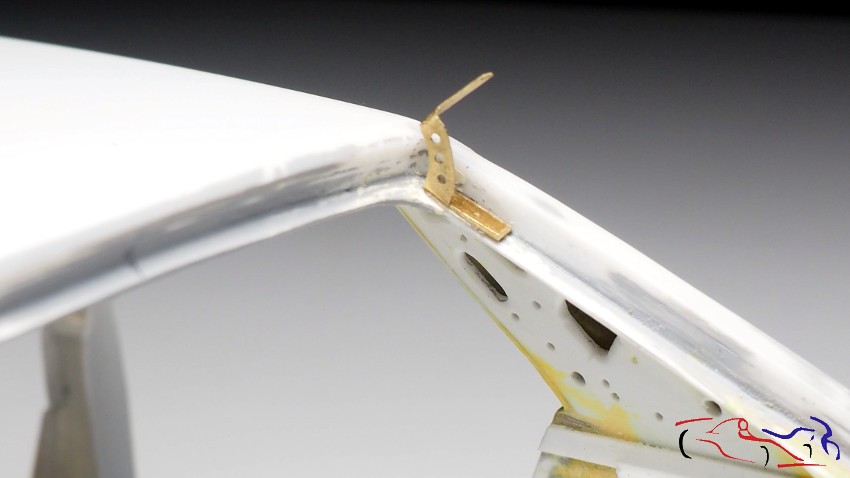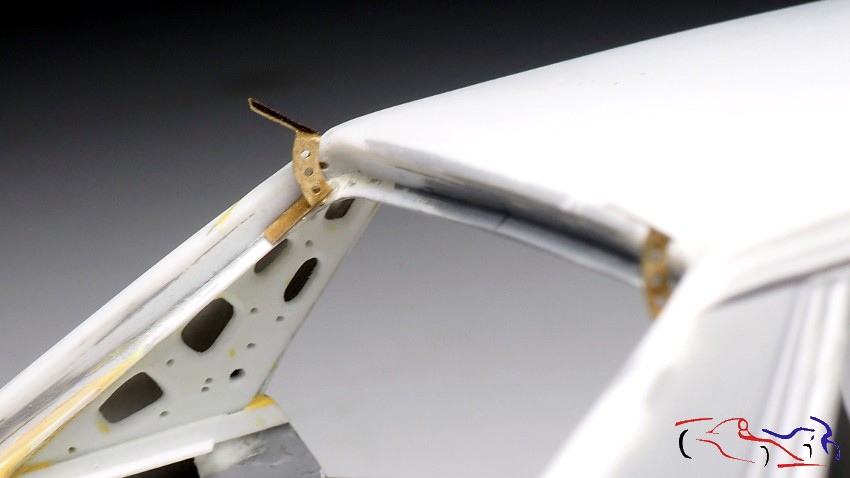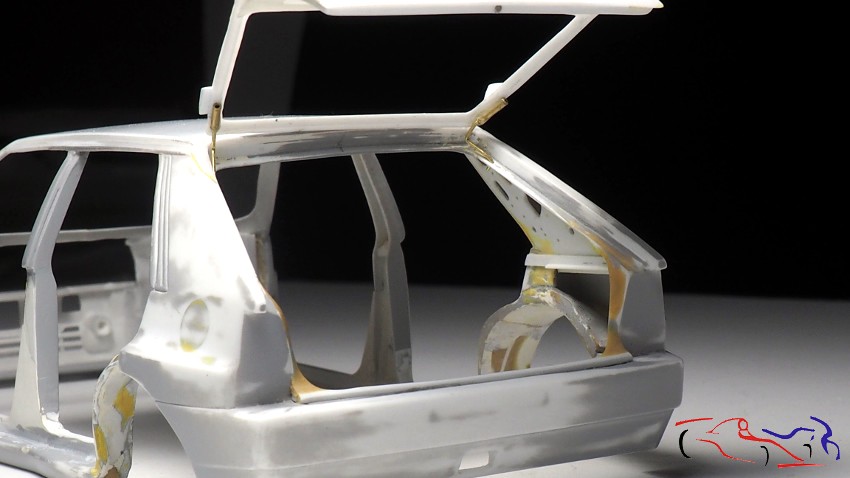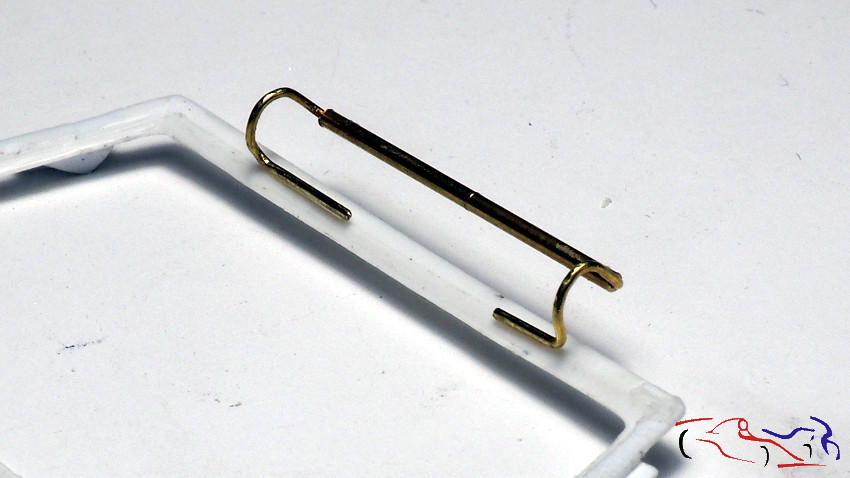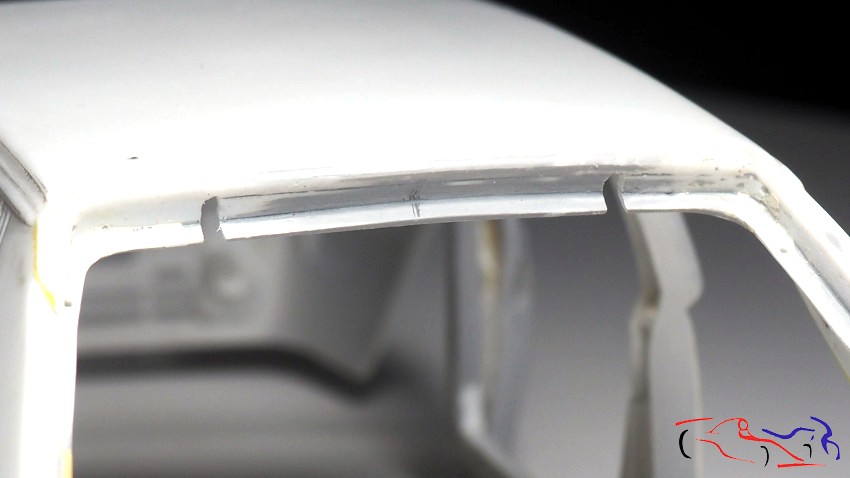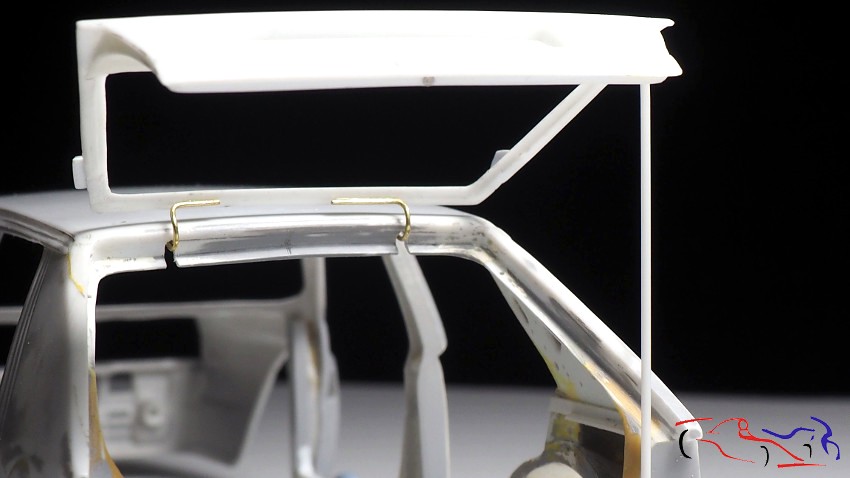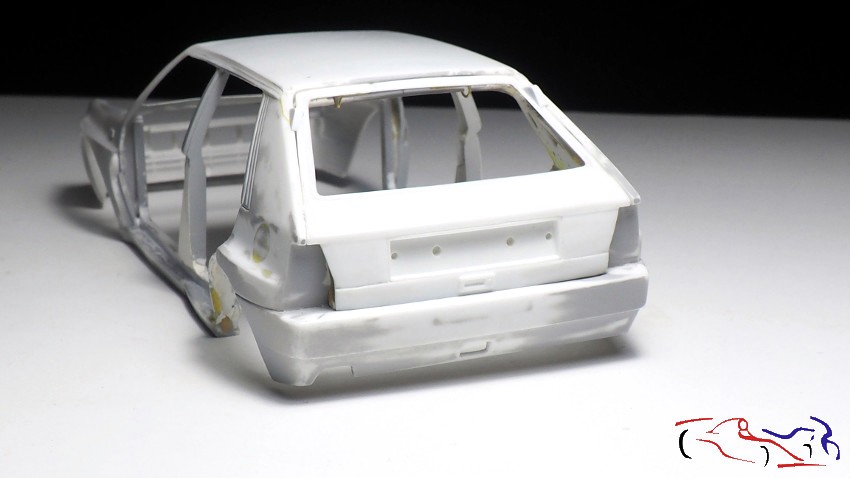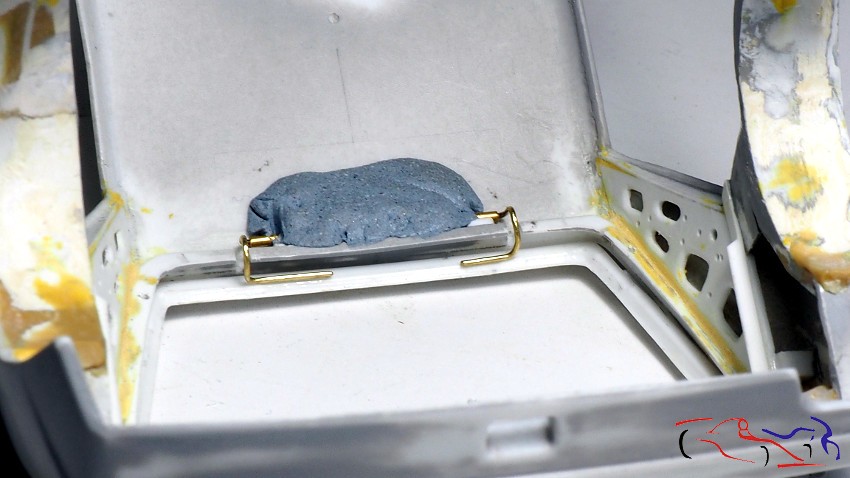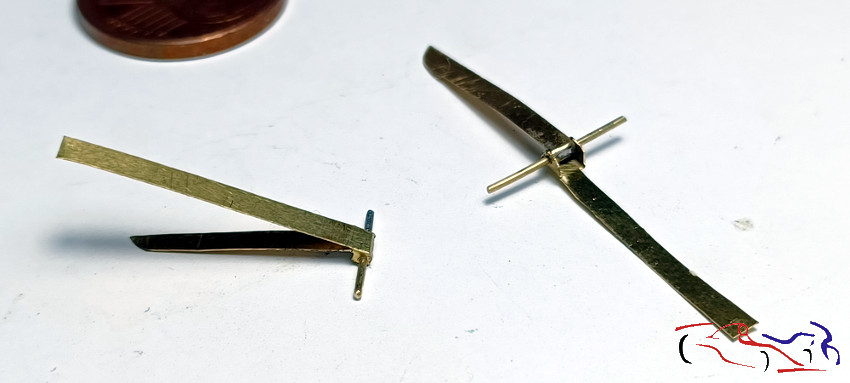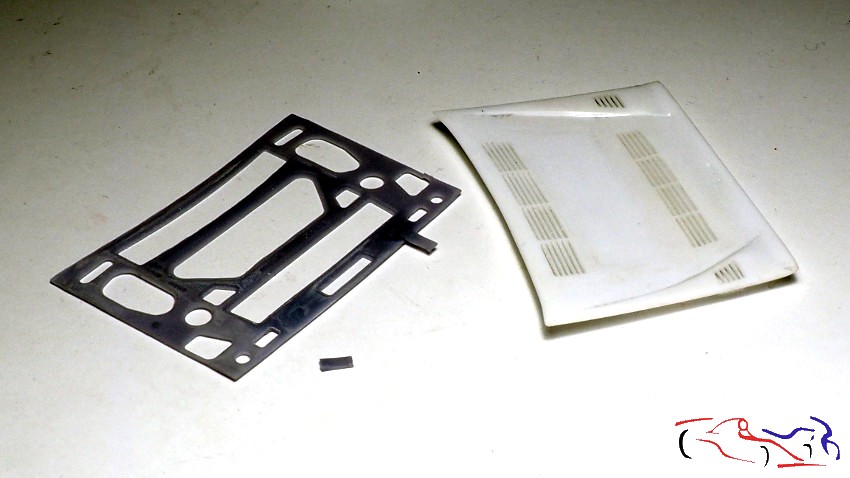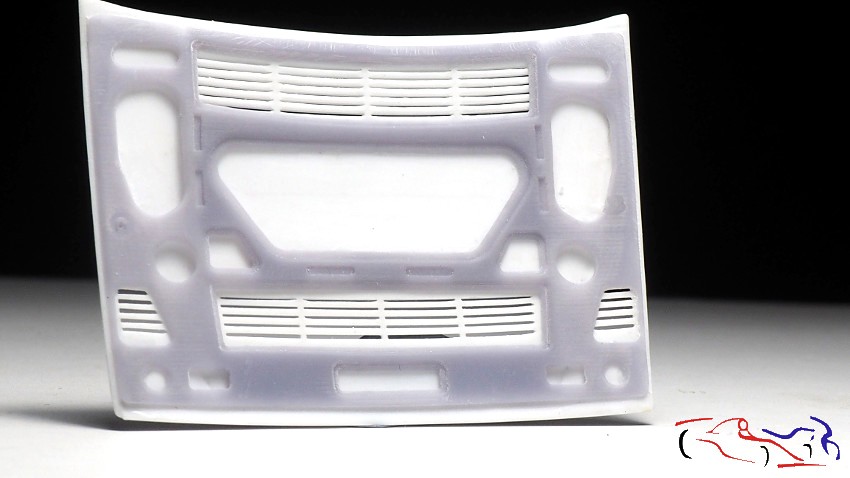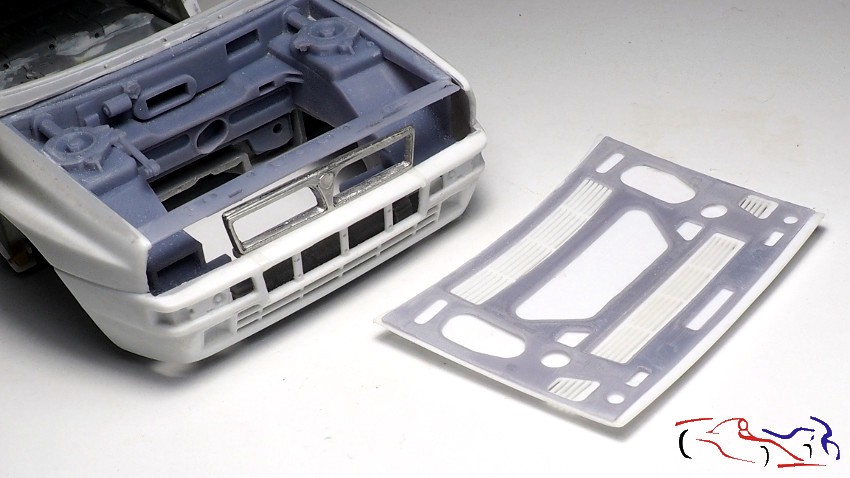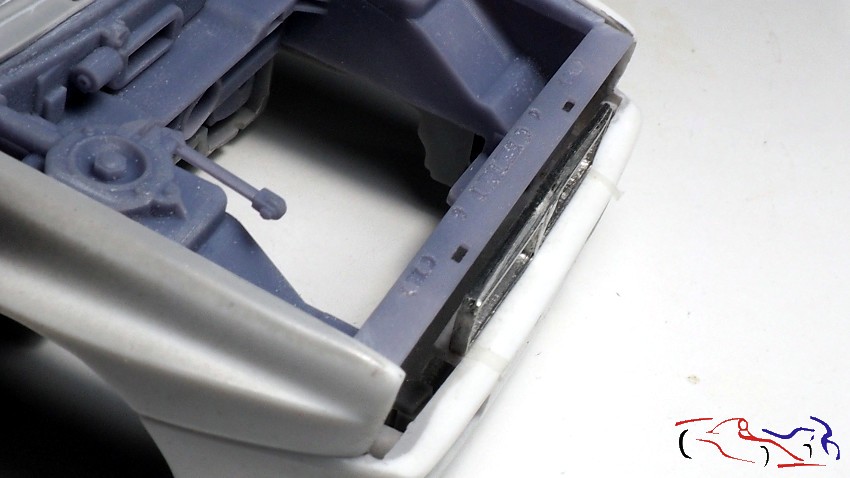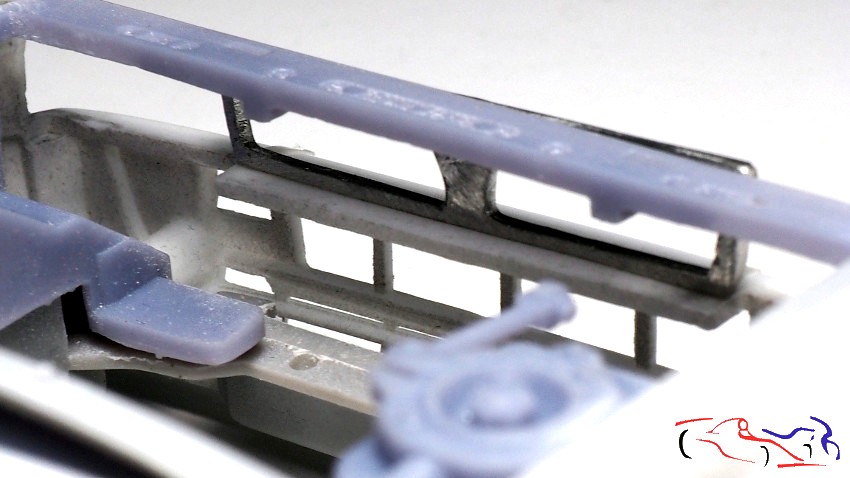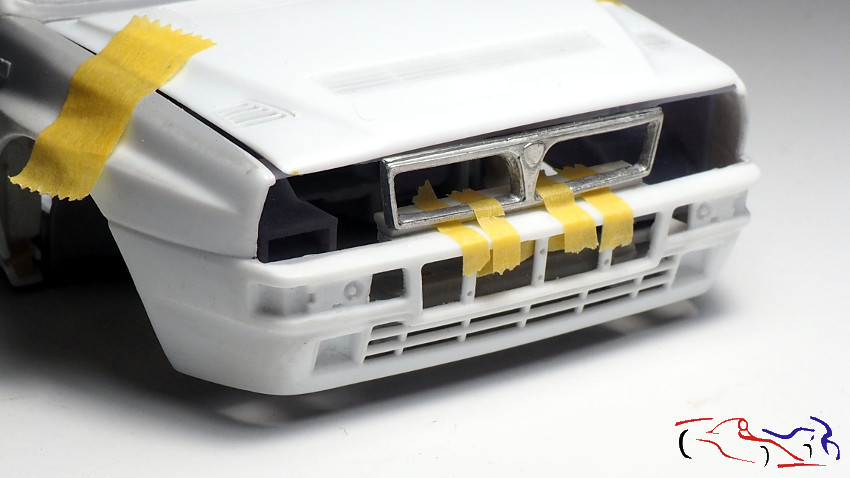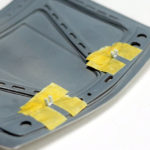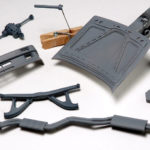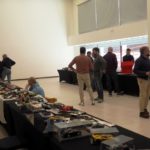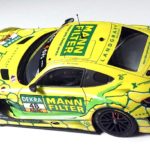Durante este periodo largo sin poner ninguna actualización, me he dedicado a analizar las posibilidades que tenía para poner bisagras en todas las piezas del coche que recorté, es decir, capó, portón trasero y puertas, empezando por el portón trasero. Ponía en práctica todo lo que pensaba, por lo que todo no era viable hasta el final. Aquí os indico todo lo que hice con él. Y después vino el capó, con su test, que aunque no tiene terminadas las bisagras, ya se como tiene que funcionar. Solo aviso que voy a escribir mucho en esta entrada!!
During this long period without adding any updates, I have been analyzing the possibilities I had to put hinges on all the parts of the car that I cut out, i.e. bonnet, tailgate and doors, starting with the tailgate. I put into practice everything I thought, so everything was not feasible until the end. Here is what I did with it. And then came the bonnet, with its test, that although the hinges are not finished, I know how it has to work. Just a warning that I’m going to write a lot in this post!
Empezamos por el portón trasero. Lo primero que hice fue intentar poner un eje de giro para que el portón trasero girara, digamos que fijo como el de la foto. Pero me di cuenta que el portón necesitaba salir de su posición, por lo que el eje de giro debia estar más hacia delante.
Let’s start with the tailgate. The first thing I did was to try to put a pivot shaft for the tailgate to rotate, let’s say fixed like the one in the picture. But I noticed that the tailgate needed to come out of its position, so the pivot should be more forward.
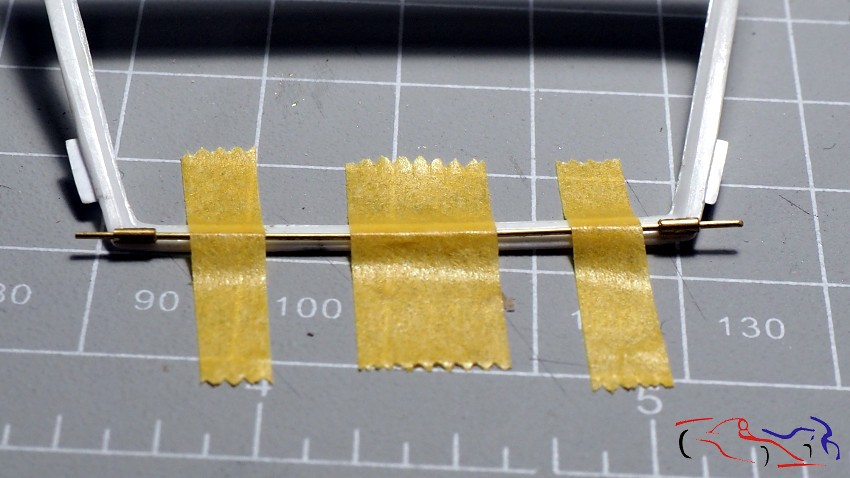
Y tanto le di vueltas, que me di por vencido por que veia la solución muy lejana, decidiendo dejar el portón abierto. Para ello, hice en latón, unas “bisagras fijas”, tal y como muestro a continuación. Además, en ese análisis de como hacerlas, pensé en dos variantes: la definitiva con las piezas de latón recreando las bisagras (en las dos primeras fotos), y la primera, con tubo de latón doblado. Como véis, no he estado parado todo este tiempo!!
I thought about it so much, that I gave up because I saw the solution very far away, deciding to leave the gate open. To do this, I made some brass “fixed hinges”, as shown below. Also, in this analysis of how to make them, I thought of two variants: the final one with the brass pieces recreating the hinges (in the first two photos), and the first one, with bent brass tube. As you can see, I haven’t been standing still all this time!
.
Y en ese momento, me llegó el Lancia Delta Integrale de Italeri a escala 1/12, en el que vi, la solución aportada por la marca italiana. Dicha solución, aunque no muy real, recortaba el marco de la carrocería por el que pasarían el tubo anclado en el portón, cuyo eje de giro se situaba en la carrocería, en la parte de detrás muy cerca del marco. Y decidí copiarlo. Tomé medidas e hice pruebas….mil pruebas, hasta que di con las medidas correctas, pasando a hacer la pieza definitiva como se ve en la foto. Tened en cuenta que ese tubo va metido en otro que es el que se pegará a la carrocería, permitiendo que la pieza gire:
And at that moment, I received the Lancia Delta Integrale from Italeri in 1/12 scale, in which I saw the solution provided by the Italian brand. This solution, although not very real, cut out the frame of the bodywork through which the tube anchored in the tailgate would pass, whose axis of rotation was located in the bodywork, in the rear part very close to the frame. And I decided to copy it. I took measurements and made tests….thousands tests, until I found the correct measurements, and then I made the final piece as shown in the photo. Keep in mind that this tube goes into another one that will be glued to the body, allowing the piece to rotate:
A su vez, recorté el marco del portón que hice en la carrocería….
At the same time, I cut out the door frame, that I made on the bodywork…..
Siendo éste el resultado una vez abierto y cerrado:
This is the result, opened and closed:
Aquí os muestro, donde va fijada la bisagra, con BlueTack para las pruebas.
Here I show you, where the hinge is fixed, with BlueTack for testing.
Y una vez pensado el portón trasero, nos movemos hacia el capó, ya que al tener el motor de Claudio de Bellis pendiente, el tener este asunto solucionado me permitirá avanzar con él. Para hacer estas bisagras, hay que tener en cuenta que el capó pivota por la bisagra y sale por delante de la rejilla y de los faros, tapándolos un poco por la parte superior. Esto es determinante para ver donde se pone el angulo de giro. Y en principio, intento hacerlo como el coche real, como vemos en la siguiente foto. Pero toda esa bisagra, aunque es muy pequeña, es enorme para el espacio que tengo. Además, una de esas piezas se me partió en la soldadura, por lo que no me sirvieron…
And once we have thought about the tailgate, we move on to the bonnet, as having the Claudio de Bellis engine pending, to have this issue solved will allow me to move forward with it, with the engine. To make these hinges, we have to take into account that the bonnet pivots with the hinge and comes out of the grille and the headlights, covering them a little at the top. This is decisive to see where the pivot angle is. And at the beginning, I try to do it like the real car, as we can see in the following picture. But all that hinge, although it is very small, is huge for the space I have. Besides, one of those pieces broke during the welding process, so they were no good for me…
Pero para pensar en la solución, debía saber del espacio que disponía, incluyendo el superior hacia el capó. Por loq ue me dediqué a poner los nervios del capó, realizados en 3D por Claudio de Bellis, que se invluyen en el conjunto del motor. Decir que aunque yo había realizado dicha pieza, esta es más real. Y lo primero que hago es eliminar los pivotes que sobresalían para fijar el capó en la cuna del motor. Los corto y limo la parte que sobresalía en dicha pieza correspondiente a la bisagra simulada. Y pegamos la pieza al capó con ciano, ajustándola a las rejillas. Una vez pegada, repasé los bordes de toda la pieza para que dejaran un contorno libre, y redondeando las esquinas conforme al modelo real.
But thinking about the solution, I had to know how much space I had, including the space above the bonnet. So I decided to put the bonnet ribs, made in 3D by Claudio de Bellis, which are integrated in the whole engine. Although I had made this part, this one is more real. And the first thing I do is to remove the pivots that protruded to fix the bonnet to the engine cradle. I cut and file the part that protruded on the piece corresponding to the simulated hinge. And we glued the piece to the bonnet with cyano, adjusting it to the grilles. Once glued, I reworked the edges of the whole piece to leave a free contour, and rounding the corners according to the real model.
Vamos a revisar ahora el espacio que tengo para poner la bisagra. Para ello ponemos la cuna y colocamos la rejilla en su posición, fijandola con cinta adhesiva transparente de doble cara.
We are now going to check the space I have to put the hinge. To do this, we put the cradle in place and place the grille in position, fixing it with double-sided transparent adhesive tape.
Desde aquí, vemos el espacio que hay y me doy cuenta que la barra transversal donde se apoyan las bisagras es quizás demasiado ancha y haya que ponerla más fina. Pero eso lo dejamos para más adelante. Lo que si tengo que hacer, es abrir esos dos huecos hacia adelante, para que las bisagras puedan moverse. Recordad que esos agujeros estaban pensados para poner los que eliminé de la pieza de los nervios del capó. También observé, que la rejilla de metal blanco de un TK de Studio27 que usaré, sobresale un poco hacia adelante. Tendré que hacer una fijación que sea más fiable.
From here, we can see how much space there is and I show that the cross bar where the hinges rest is perhaps too wide and needs to be made thinner. But we’ll leave that for later. What I do have to do, is to open those two holes forward, so that the hinges can move. Remember that those holes were intended to put the ones I removed from the bonnet rib piece. I also noticed, that the white metal grille from a Studio27 TK that I will use, stands out a bit to the front. I’ll have to make a fixing that is more reliable.
Y si la vista es posterior, tenemos una prolongación en la carrocería que se puede aprovechar, justo debajo de la rejilla.
And if the view is from the rear, there is an extension in the bodywork that can be exploited, just below the grille.
Y ahora montamos todo un poco para ver los encajes. Si véis, la pieza d ela rejilla está adelantada respecto al capó, por lo que la tengo que poner más hacia detrás. A su vez, véis que no toca por su parte inferior la carrocería. Esto es debido a que la he elevado un poco porque tanto abajo como arriba, el coche real tiene un espacio que hayq ue mantener. Para ello, hice una pieza donde va montada dicha rejilla y con un tope para que no se mueva hacia detrás, favoreciendo su posición a la hora de pegarla.
And now we put everything together a bit to see the fittings. If you can see, the grille piece is advanced with respect to the bonnet, so I have to put it further back. At the same time, you can see that it doesn’t touch the lower part of the bodywork. This is because I have raised it a little because both below and above, the real car has a space that must be maintained. To do this, I made a piece where the grille is mounted and with a stop so that it does not move backwards, facilitating its position when gluing it.
Y como no, las bisagras. Es un tubo soldado a una pletina de latón, cortada de un fotograbado de un interiro de unas llantas.
And of course, the hinges. It is a tube soldered to a brass plate, cut from a photoengraving of the inside of a wheel rim.
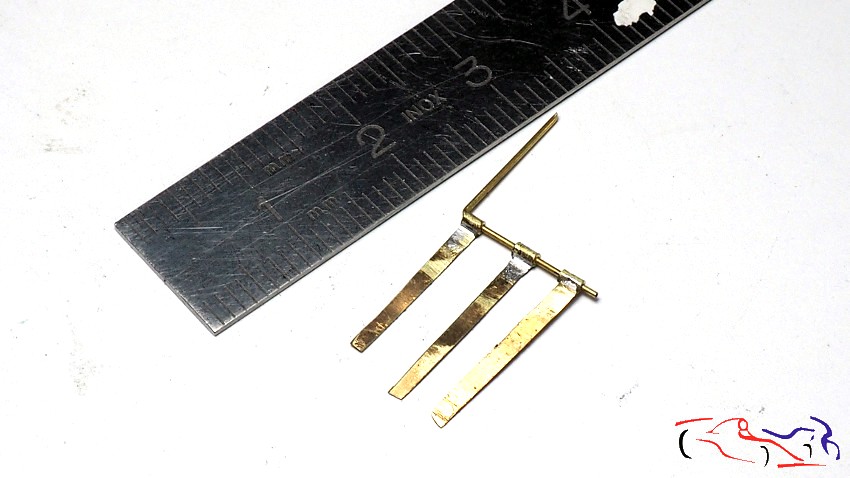
Hice tres por si una se me rompía, cosa que sucedió, al doblarlas de acuerdo al espacio que tenía.
I made three in case one broke, which it did, folding them according to the space I had.
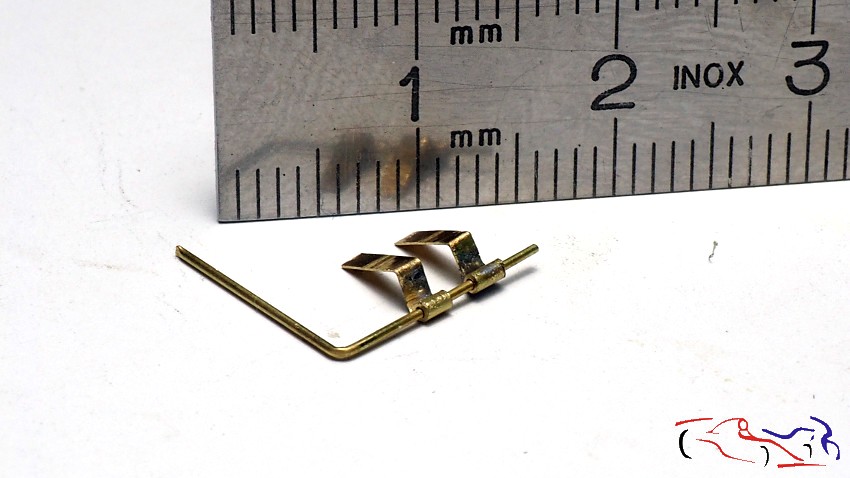
Y ahora os muestro como irán colocadas. La izquierda está en posición de capó cerrado, y la derecha de capó abierto. El tubo soldado irá fijado con un redondo interno, que en forma de U irá colocado en dos agujeros hechos en la rejilla, y así podrá girar.
And now I show you how they will be positioned. The left one is in closed bonnet position, and the right one in open bonnet position. The welded tube will be fixed with an internal round, which in a U-shape will be placed in two holes made in the grille, so it will be able to rotate.
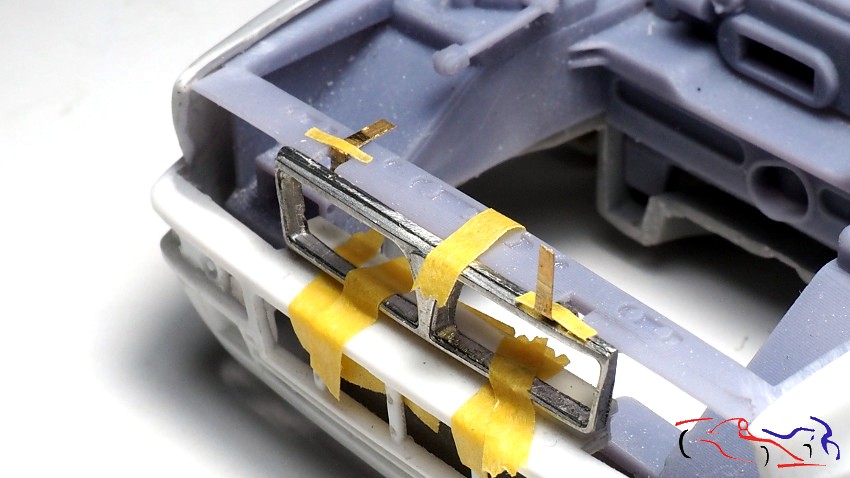
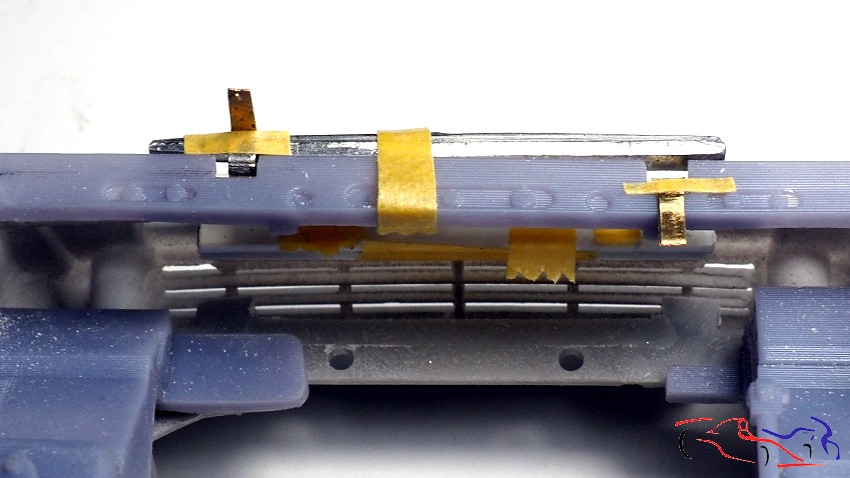
Como véis, el espacio es mínimo y tengo que trabajar casi a la décima de milimetro. Aun así, creo que si que lo tengo enfilado, y puedo ser más optimista de pasar al siguiente paso: las bisagras de las cuatro puertas!! Pero primero tengo que fijar las del capó y mostrarlo!! (y no se si empezaré otro kit más rapidito para hacer a la vez sin tanta compliacaión :-)).
As you can see, the space is minimal and I have to work almost to the tenth of a millimetre. Even so, I think I’ve got it lined up, and I can be more optimistic about moving on to the next step: the hinges for the four doors! But first I have to fix the bonnet hinges and show it off! (and I don’t know if I’ll start another model quicker to do at the same time without so much complication :-))..
Garcias por ver y comentar!!
Thanks for watching and commenting!

